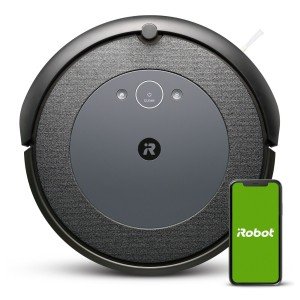Robotic Hoovers: Revolutionizing Home Cleaning
In the busy world we live in, where time is of the essence, home tasks often take a backseat. Amongst the most significant improvements in domestic technology are robotic hoovers, or robotic vacuum cleaners. Recommended Webpage have actually changed the method people approach cleaning their homes, permitting for effectiveness and convenience that standard vacuuming can not match. This short article explores the features, advantages, and future of robotic hoovers, in addition to attending to common inquiries about their functionality and upkeep.
What Are Robotic Hoovers?
Robotic hoovers are automated vacuum developed to browse through spaces and clean floors without human intervention. They make use of different innovations, consisting of sensing units, cams, and expert system, to identify dirt and navigate barriers, making them a valuable addition to modern households.
Secret Features of Robotic Hoovers
Smart Navigation: Most robotic vacuums are equipped with sophisticated sensory innovation that enables them to map and navigate areas efficiently. This includes:
- Lidar Sensors: To produce a map of the home.
- Infrared Sensors: To avoid obstacles and drops (like stairs).
- Cliff Sensors: Prevents the unit from falling off edges.
- Automated Scheduling: Many robotic hoovers can be programmed to clean up at specific times, making the most of benefit for users.
- Self-Charging: Most designs return to their docking stations when their battery is low, ensuring they are always charged and all set to clean.
- App Connectivity: Modern robotic vacuums frequently feature apps that allow users to manage their devices remotely, set schedules, and even see cleaning maps.
- Multiple Cleaning Modes: Options such as area cleaning, edge cleaning, and scheduled cleaning permit tailored cleaning regimens based on the family needs.
Advantages of Robotic Hoovers
- Time-Saving: Robotic hoovers can run individually, maximizing important time for homeowners to focus on other jobs.
- Consistency: They supply consistent cleaning efficiency and preserve floor tidiness without the inconsistency that often includes manual vacuuming.
- Accessibility: With their compact style, robotic hoovers can easily reach under furnishings and into tight spaces where traditional vacuums struggle.
- Upkeep of Various Floor Types: Many robotic vacuum cleaners can adjust to various surfaces, including carpets, wood, tile, and more.
- Integration with Smart Home Systems: They can be linked to smart home gadgets, enabling users to integrate them into their home automation systems.
Comparison of Popular Robotic Hoovers
Here's a brief comparison of some popular models in the market:
| Model | Smart Navigation | App Connectivity | Battery Life | Price Range |
|---|---|---|---|---|
| iRobot Roomba 675 | Yes | Yes | 90 minutes | ₤ 250 - ₤ 300 |
| Neato Botvac D7 | Yes | Yes | 120 minutes | ₤ 600 - ₤ 700 |
| Eufy RoboVac 11S | Yes | Limited | 100 minutes | ₤ 200 - ₤ 250 |
| Roborock S6 | Yes | Yes | 150 minutes | ₤ 500 - ₤ 600 |
| Shark ION Robot | Yes | Yes | 120 minutes | ₤ 250 - ₤ 350 |
Upkeep and Care for Robotic Hoovers
Regardless of their automated features, robotic hoovers require regular maintenance to ensure their optimal efficiency. Here are some pointers for maintaining a robotic vacuum:
- Empty the Dustbin Frequently: Regular clearing assists keep suction power.
- Tidy the Brushes: Hair and particles can block brushes; regular cleaning prevents this.
- Check the Filters: Dirty filters can restrain performance; they should be cleaned or changed as specified by the maker.
- Examine Wheels and Sensors: Ensuring that the wheels are totally free of barriers and sensors are clean will improve navigation and efficiency.
- Update the Firmware: Keeping the robotic vacuum's software application up-to-date can fix bugs and improve performance.
Future of Robotic Hoovers
As technology continues to develop, the potential for developments in robotic vacuums is vast. Developments on the horizon might include:
- Improved AI Capabilities: Enhanced learning algorithms might enable robotic hoovers to much better comprehend homes and cleaning needs.
- Integration with More Smart Home Devices: Future models might become much more integrated with home automation systems, enhancing use.
- Advanced Cleaning Features: Innovations like mopping capabilities and deeper carpet cleaning performance could expand their utility.
- Sustainability Features: Future models may integrate eco-friendly innovations, such as solar charging or recyclable products.
Frequently Asked Questions (FAQs)
How much do robotic hoovers usually cost?
- Costs for robotic hoovers vary considerably depending upon features, however typically range from ₤ 200 to ₤ 800.
How loud are robotic hoovers?
- A lot of robotic vacuums operate at a noise level in between 50 to 70 decibels, which is quieter than conventional vacuums.
Can robotic vacuums handle pet hair?
- Yes, numerous robotic hoovers are created specifically with powerful suction and brushes to manage pet hair effectively.
Do robotic vacuums work on carpets?
- Definitely. The majority of robotic vacuums can clean various types of surfaces consisting of carpets, hardwood, and tiles.
Do I require to program my robotic vacuum?
- While you can set schedules and choices via an app, numerous designs can likewise operate on demand or instantly as soon as charged.
In conclusion, robotic hoovers represent a remarkable leap in home cleaning innovation, offering amazing benefit and efficiency that interest modern-day homeowners. As technology continues to advance, these gadgets promise even much better cleaning capabilities, further enhancing home hygiene and upkeep. For anybody wanting to simplify their cleaning regimens, investing in a robotic hoover can be a profoundly fulfilling choice.

